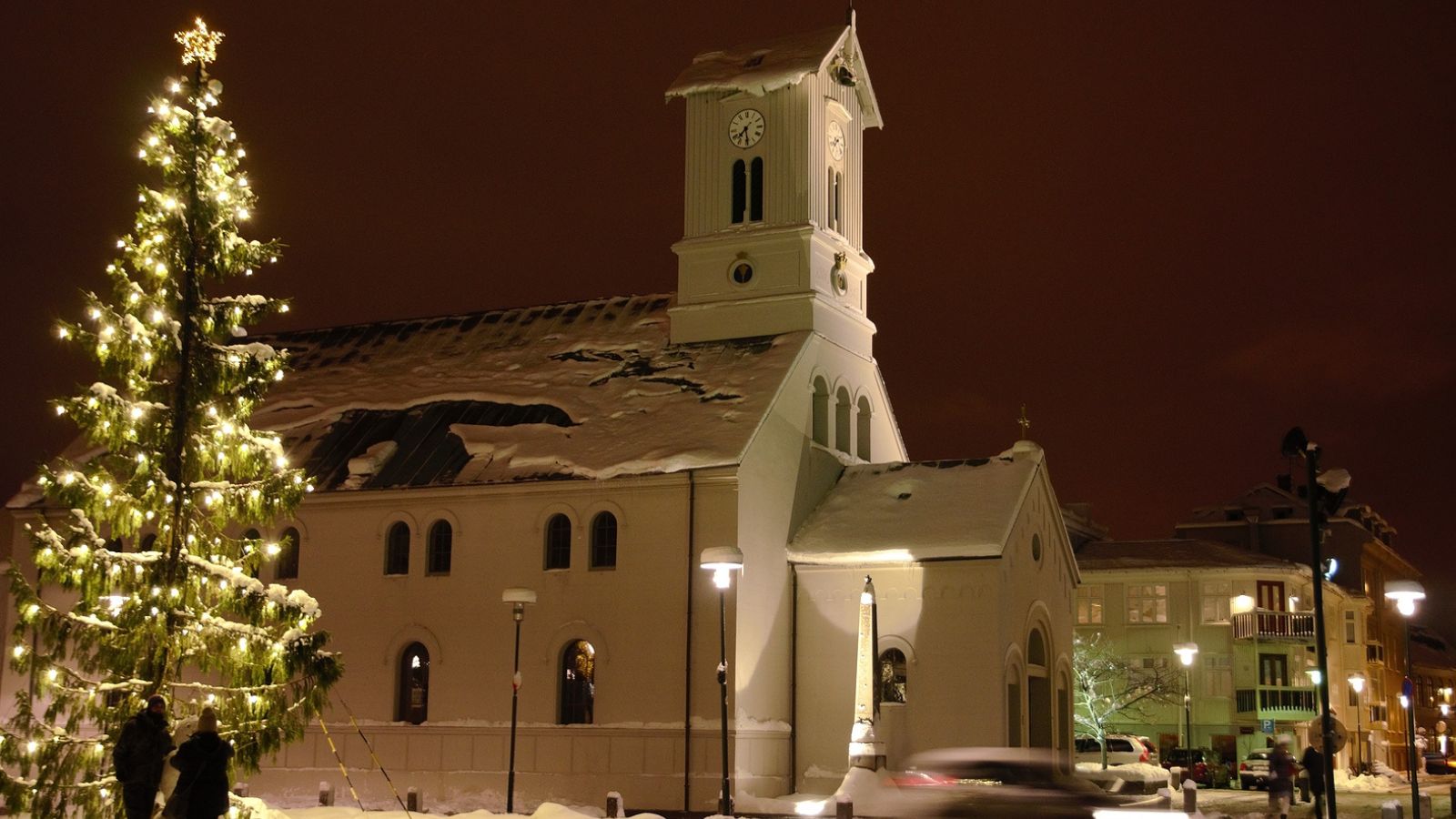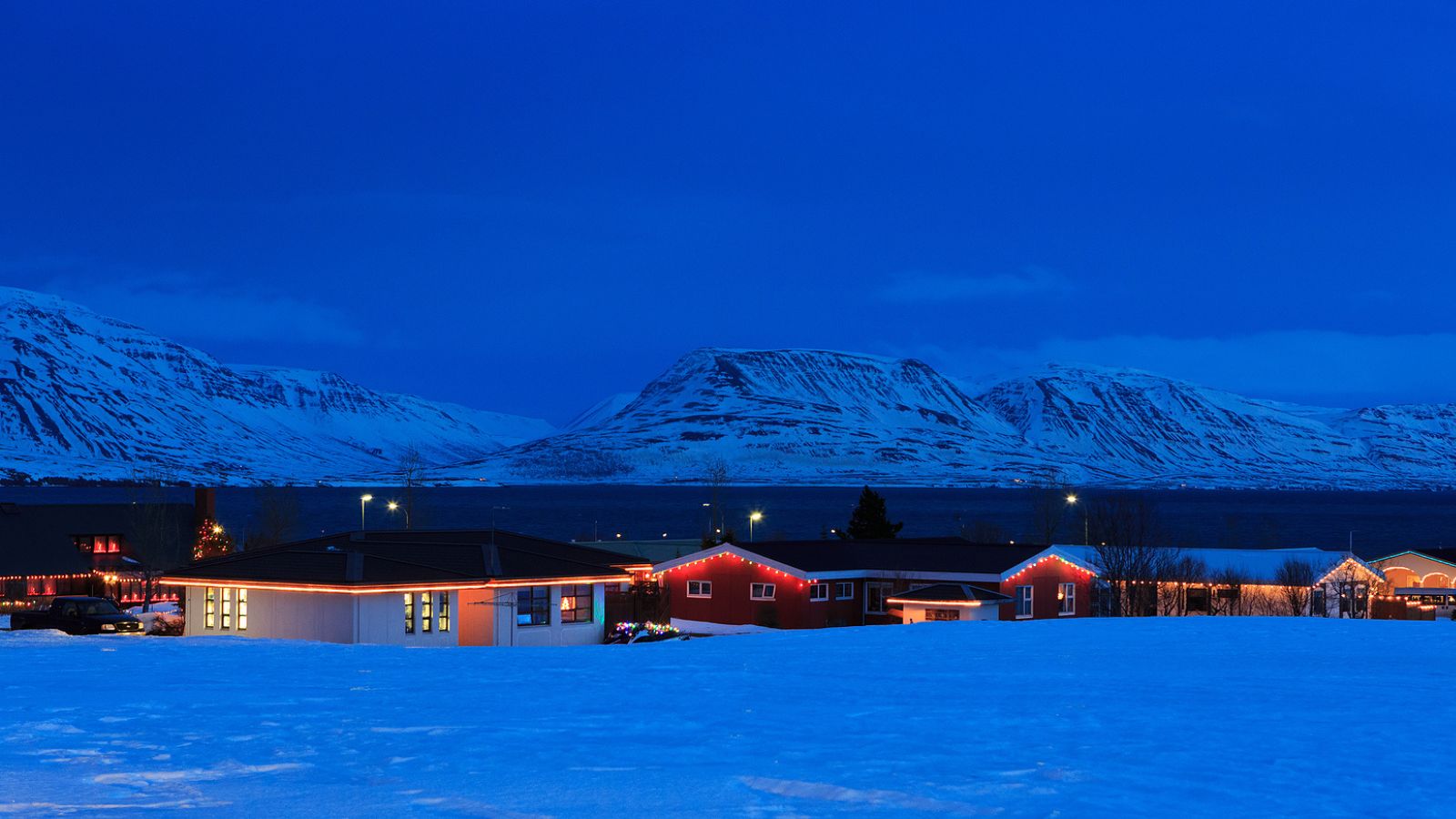Christmas In Iceland: Magical Traditions, Festive Fun & What to Expect
Christmas in Iceland is a magical experience, and something truly unique. Tradition lies around every corner. Let’s dive into what the season brings!
The Icelandic Christmas is an intriguing mix of folklore and tradition. Like most countries, Iceland celebrates Christmas with an abundance of food and gifts, yet it is laden with Icelandic traditions, which makes it that little bit more special. Here is all you need to know about the festive season in Iceland and how they celebrate Christmas.

Is Christmas A Good Time To Visit Iceland?
If you’re looking for somewhere to spend a cozy Christmas, complete with reindeer and snow, Iceland could be the Winter Wonderland you’re waiting for. You can make it romantic or an adventure for the whole family, whatever you want from your festive season. Plus, the Christmas period is a whopping 26 days in Iceland, from the 11th December to the 6th January.
How do Icelanders Celebrate Christmas?
When it comes to Christmas, Iceland knows how to do it right! The festive season begins early, with a long lead-up filled with unique traditions and excitement. One of the most beloved customs is the arrival of the 13 Yule Lads, Iceland’s mischievous version of Santa Claus, who visit homes one by one in the nights before Christmas.
On the first day of Christmas, each home typically sets up a Christmas tree indoors in the living room, with most decorating it on December 11th. Presents are laid under the tree for family and friends throughout the 13 days leading up to Christmas Day.
Iceland observes a very different gift-giving tradition from other parts of the world. The most common gift to receive in Iceland is a book! Icelanders’ love of books has earned them a global reputation for being a country of bookaholics. On Christmas Eve, Icelanders exchange books as gifts and then spend the night reading them. Each year, every Icelander receives at least one book under the tree.
When Do Icelanders Celebrate Christmas?
While the majority of the Christmas run-up is very similar to that in the United States and the United Kingdom, there are some key items on the itinerary that might seem a little unorthodox.
Christmas Eve (Aðfangadagur)
This day is spent doing all the last-minute things before Christmas, such as baking, wrapping, and delivering presents, welcoming in the family, and getting everything ready for a feast at 18:00.
Alternatively, some people choose to attend Mass at 18:00 instead, where they will then sit down and eat afterward.
Christmas Day
Following the large family feasts and celebrations on Christmas Eve, Christmas in Iceland is spent seeing extended family, having a party, or even just relaxing at home and making the most of the chance to switch off for a day or two.
In addition to spending time with family during these days, it is also tradition to visit cemeteries and place a wreath where loved ones may rest. Because of this, you will often see Icelandic cemeteries beautifully lit up and decorated over the Christmas holidays.
Christmas Traditions and Folklore in Iceland
In Iceland, Christmas traditions are a big part of the festivities; they make Christmas the unbelievable time that it is. The Icelandic Christmas period is a varied combination of traditional folklore and religious beliefs that begin on December 23rd and continue until January 6th, a time when there is no Santa, no reindeer (well, apart from the wild ones), and no milk and cookies. Instead, Iceland has its own unique traditions and folklore that add to the magic of the festive season.
Yule Lads
The Icelandic Yule Lads are all named after characteristics, mostly naughty habits, e.g, doorslammer or windowpeeker - you get the idea. And as the story goes, you leave a shoe out on the windowsill and they turn up and leave a present inside it; however, if you’ve not been behaving yourself, then you may only be left with a potato instead - believe us, that’s not what you want!
If you’re well-behaved, the Yule Lads will leave a small item like sweets or a pair of socks. Now, the socks may seem a little disappointing, but if you’re not presented with an item of clothing by the Yule Lads, then it is Icelandic folklore that you’ll be eaten by the Christmas Cat.
Baking
In the days before Christmas, a lot of Icelanders like to spend their time baking delightful treats in preparation for the big day - after all, Christmas is all about food… and family, of course.
Baked goods vary from classic gingerbread cookies to houses, as well as other various confectionery treats. One of the most traditional treats in Iceland is ‘Sara’. This is the name of a macaroon-based dessert that is filled with chocolate cream and is then coated with even more chocolate-covered treats. They’re very sweet, and many Icelanders want to brush their teeth after just thinking about them!
Thorlak’s Mass (Þorláksmessa)
Christmas celebrations take place all through December; however, Icelanders begin to celebrate the official start of Christmas on the 23rd, making it an unofficial Christmas Eve.
During Thorlak’s Mass, Reykjavík is usually filled with the hustle and bustle of city life. You have a blend of last-minute shoppers, friends, and families walking the streets, bars are filled with festive drinkers, and overall, the locals all begin to get into the Christmas spirit. This will also be the last chance to eat out for many until after Christmas, as places begin to close for Christmas Eve and Day.
Skate
Skate is another December 23rd tradition for many locals, which involves eating a specific fish called Skate (hence, the name). This tradition involves hosting a dinner party where all of the guests will dress in their worst clothes before then getting dressed into their Sunday best to go out in. You may question why, and that would be a completely reasonable response. The reason for the outfit change is that Skate has an extremely potent and overpowering stench. So bad, in fact, it seeps into your clothes and fills the house with a smell you could all do without.
A lot of Icelanders feel that Christmas has not truly started until you have had Skate, so there’s no way around this one if you want to celebrate like a true local!
New Year’s Eve in Iceland
There is an enormous celebration in Iceland to celebrate the end of one year and the beginning of another. It all begins with a family dinner in the evening, before heading out to enjoy a large traditional bonfire, whichever is closest to them. However, as the capital city is Reykjavík, they like to put on a show. So this is celebrated with a massive fire where everyone will gather around.
Following a bonfire, some will then head home to get back in the warmth and enjoy something fun on television. Others choose to brave the weather and enjoy what Iceland has to offer before then heading out to enjoy a large firework display from midnight. Clubs and bars will remain open until the early hours, or there is always an option for a house party. Either way, Icelanders usually find somewhere to party!
Christmas Food in Iceland
It is no mystery that Icelanders love their food, especially meat! Today, smoked meat is considered the nation's favorite and is an essential part of the Christmas feast. Ham, smoked lamb, and ptarmigan (a medium-sized gamebird) are typically served with peas, cabbage, corn, beans, gravy, etc.
Another Christmas favorite is laufabrauð (Leaf Bread). Leaf bread is a thin bread that is cut in a circular shape, with festive designs carved into it using a special gadget. This tradition originates from northern Iceland.
Icelanders also typically drink a spirit called Brennivín, more commonly known as ‘The Black Death’. The drink is made from fermented potato mash and is flavored with caraway. It can be considered Iceland’s signature distilled spirit, which is heavily consumed over the Christmas period.
For dessert, Icelanders favor rice pudding. This delicious Icelandic food is made of rice porridge, whipped cream, and chopped almonds. As a Christmas tradition, sometimes a whole almond is put in the rice pudding, and everyone must guess who has the almond. Whoever gets the almond receives a Christmas gift!
Top Things To Do In Iceland at Christmas
Wondering what exactly you can do when visiting Iceland during the festive period? Let’s break down our top tips for your time in Iceland at Christmas.
- Attend a festive concert: Churches around the capital will put on carol concerts and festive performances.
- Go ice-skating in Reykjavík: The ice skating rink at Ingolfstorg Square will open in late November and remain open for the festive period.
- Search for the 13 Yule Lads around town: There are 13 depictions of the Yule Lads around the capital that you can spot.
- Spot the Northern Lights: December in Iceland is a great opportunity to spot the aurora borealis dancing overhead.
- See Reykjavík’s firework display: On New Year’s Eve, you can enjoy the colorful displays over the city.
Christmas in Iceland FAQ
How do you say “merry Christmas” in Icelandic?
‘Gleðileg jól’ is the most commonly heard way to wish someone a merry Christmas in Iceland. The rough pronunciation is “GLEH-dih-leg joul”.
What is Christmas called in Iceland?
In Iceland, Christmas is called Jól, a word that shares its origins with the English term "Yule".
Are there Christmas markets in Iceland?
Of course! The capital, Reykjavík, is the main place where Christmas markets take place. Within the city and on the outskirts, there are a handful of markets that appear annually for you to indulge your festive spirit.
Austurvollur Christmas Market in central Reykjavík features cozy stalls selling handmade gifts and tasty food. For a bit more of a natural market, Inside the Heidmork Forest is on the outskirts of the city in a tranquil space within Heidmork Nature Reserve, run by the Reykjavík Forest Service.
If you’re looking for a more traditional Icelandic experience, Christmas at Arbaer Open Air Museum is a great way to get hands-on. The museum is open year-round, but their festive program encourages visitors to try their hand at making decorations, knitting, or traditional bakes. You can also browse gifts and try authentic Icelandic Christmas meals!
After reading this blog, you may want to learn more about the history of Iceland’s culture and any other bizarre things Icelanders like to celebrate. We wouldn’t blame you, they’re an interesting bunch!
